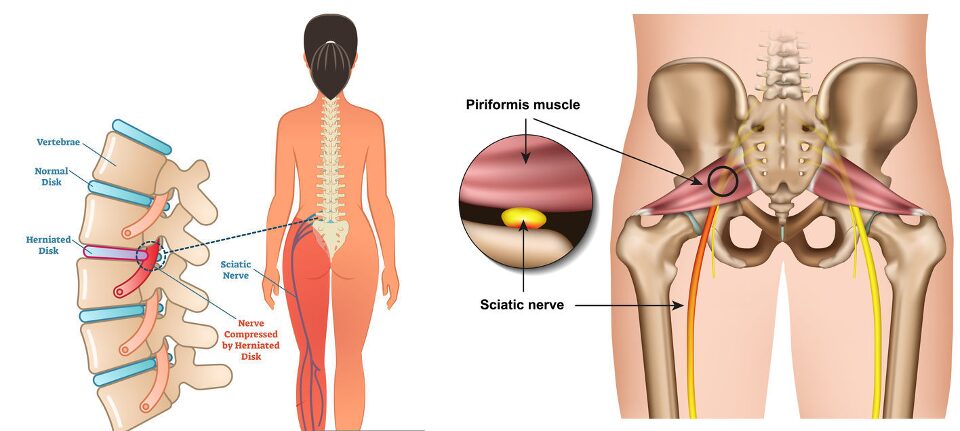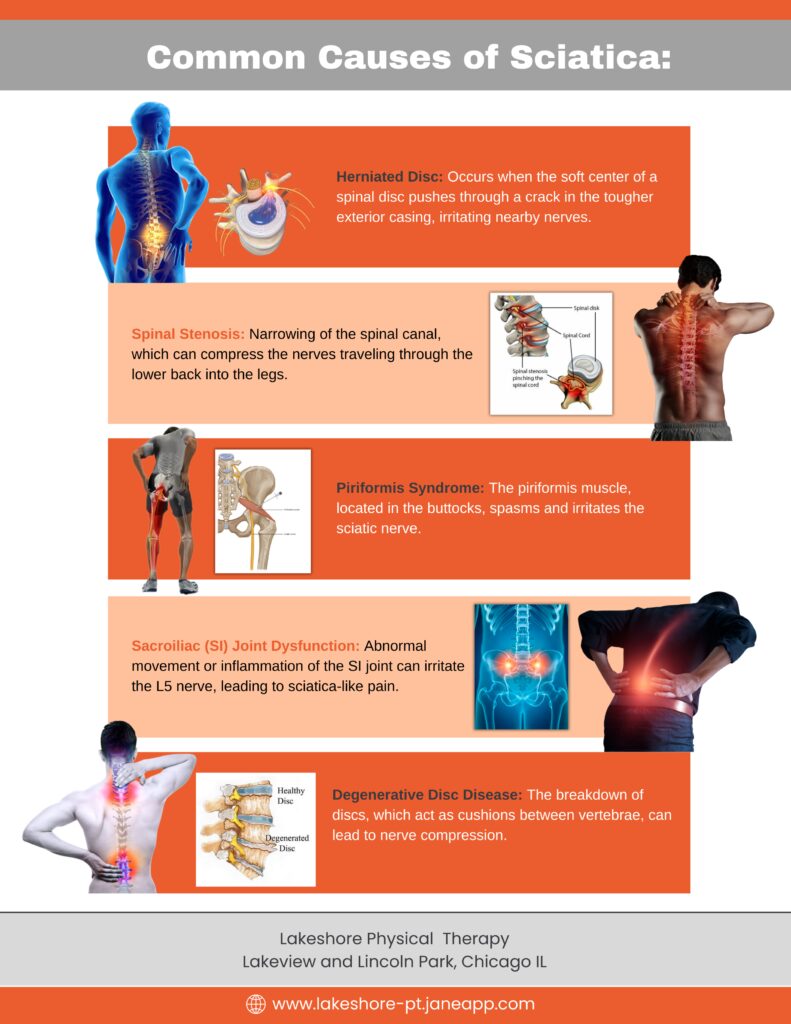Sciatica: One Pain, Many Causes
Anyone who has ever experienced sciatica knows the feeling: a radiating pain or numbness that runs down the buttock, leg, and even as far down as the calf and foot.
So named because it is felt along the path of the sciatic nerve, sciatica is not a disorder in and of itself but rather a symptom that can be caused by many different pathologies including a herniated disc (Picture A), stenosis, SI dysfunction, piriformis spasm (Picture B), or core instability. Having the source of your pain be diagnosed is very important for proper treatment as not one size fits all!

| Picture A: Herniated disc Picture B: Piriformis spasm |
The sciatic nerve consists of nerves that exit the lower lumbar spine (L4-S3 nerve roots). These nerves group together, pass through the buttock (often through the piriformis muscle), and travel down the back of the leg to the foot. Irritation to this nerve usually causes tingling, numbness, or burning. Some sciatica sufferers also report sharp pain, burning sensations, or weakness.
For nerves to stay happy, they have to have enough of three main elements: movement, blood flow, and space. Addressing these factors helps guide our treatment of nerve pain.
- Increasing Movement: Nerves don’t really stretch, but we can perform glides to slide them along their track and keep them from adhering to surrounding tissues.
- Increasing Blood Flow: Heat improves blood flow and is often an effective treatment for nerve injuries.
- Increasing Space: We want to ensure there aren’t any structures compressing the nerve such as a bulging disc, a muscle in spasm, or a narrowed vertebral foramen (bony space where the nerve exits the spinal column). Physical therapists may prescribe various manual techniques, self-stretches, and exercises to improve the space around the nerve.
In more chronic or extreme cases, irritation or compression of a nerve can cause weakness in the affected muscle as nerves also innervate (or give “electrical power” to) muscles. The muscles most commonly affected by sciatic nerve injury are the hamstrings (which bend the knee), anterior tibialis (which can result in foot drop), calf, and other ankle/foot muscles. As a result, weakness in any of these groups can result in decreased balance, difficulty with stairs prolonged walking, and feeling like your leg is going to give out on you.

Understanding where your pain is coming from is the first step to recovery
And the next best step is to have a physical therapist treat it. At Lakeshore Physical Therapy we treat these types of injuries and pathologies all of the time. We feel confident that we can identify the source of your sciatica and quickly get you pain-free!
Check out our recent Instagram post @lakeshorephysicaltherapy to see videos of some suggested exercises to treat your nerve pain!
